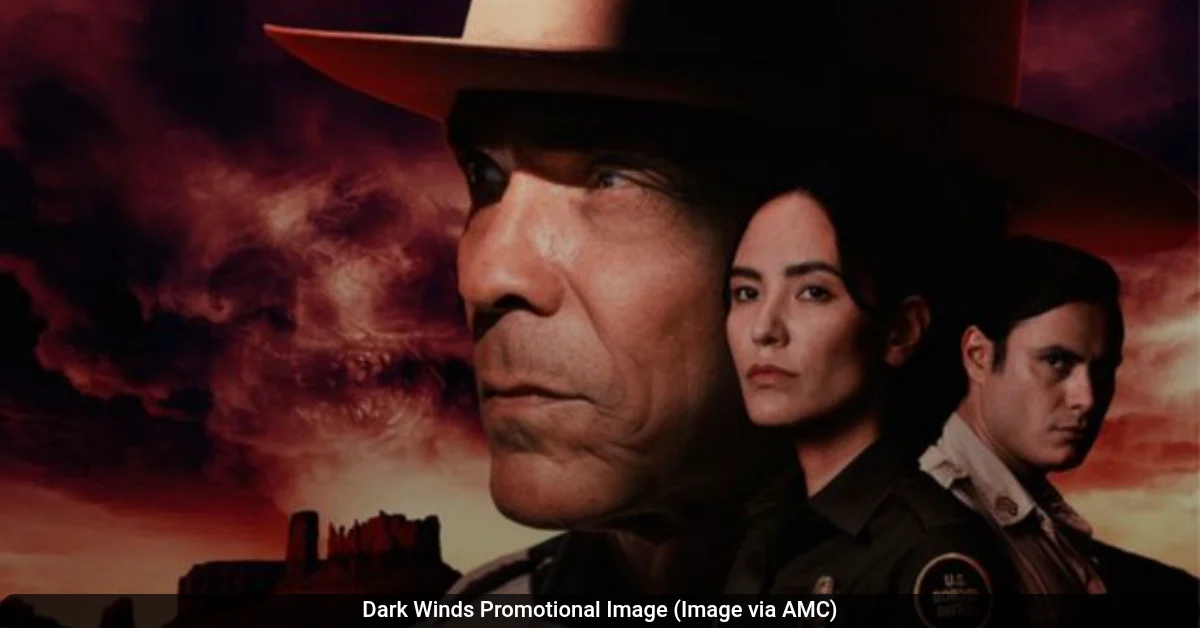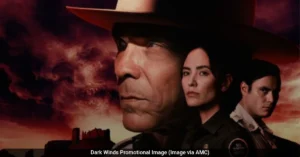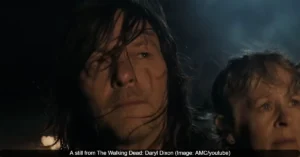The hit psychological thriller Dark Winds is indeed based on a book, or more accurately, a beloved series of novels. The AMC television show brings to life the iconic characters and gripping stories from Tony Hillerman’s celebrated Leaphorn & Chee book series, which has captivated readers for decades.
For fans of the show wondering about its origins, the connection to Hillerman’s work is the essential piece of the puzzle. The series draws its main characters and its rich Southwestern setting directly from the pages of these classic detective novels, creating a deep and authentic foundation for the on-screen drama.
The Literary Roots: Tony Hillerman’s Leaphorn & Chee
The world of Dark Winds originates from the creative mind of author Tony Hillerman. Beginning in the 1970s, Hillerman wrote a long-running series of mystery novels set in the Navajo Nation, primarily featuring two tribal police officers: the thoughtful and experienced Lieutenant Joe Leaphorn and the younger, more spiritually in-tune Officer Jim Chee.
The television series weaves together plots and characters from several of these books. The first season takes its main story from the 1978 novel “Listening Woman” and also incorporates elements from the 1980 book “People of Darkness”. Later seasons continue to pull from Hillerman’s collection, adapting stories from books like “Dance Hall of the Dead” and “The Ghostway”. After Tony Hillerman’s passing in 2008, his daughter, Anne Hillerman, continued the book series, and her work has also served as inspiration for the show. The character of Sergeant Bernadette Manuelito, played by Jessica Matten, is especially reflective of the strong, capable version found in Anne Hillerman’s novels.
From Page to Screen: A Long Journey
Bringing Hillerman’s stories to television was a project decades in the making. The effort was led by a team of passionate and powerful figures in the entertainment industry.
Actor and director Robert Redford first secured the rights to the Leaphorn/Chee novels back in 1988, but struggled for years to get a major studio to finance a project with a predominantly Native American cast. One film, The Dark Wind, was released in 1991 but was poorly received. More successful were three PBS television movies made in the early 2000s, though Redford felt they were limited by smaller budgets and distribution.
The breakthrough for the current series came from a collaboration between Redford, Game of Thrones author George R. R. Martin, and director Chris Eyre, who had previously directed the acclaimed Native American film Smoke Signals. The three, all living in Santa Fe and sharing a love for Hillerman’s work, joined forces. After the project was initially developed at HBO and later passed on, it found its perfect home at AMC, which gave the series a straight-to-series order in 2021.
“The funny thing is, it’s been 23 years since I did Smoke Signals, and we were envisioning this whole renaissance of Native American representation and filmmaking,” director Chris Eyre said. “I think we were ahead of our time. Now things are changing very quickly, and the time is here and now for a diversity of voices.”
The World of Dark Winds: Characters and Setting
The show is anchored by its three lead characters, all drawn directly from Hillerman’s books. Zahn McClarnon, who is of Lakota descent, plays the stoic and dedicated Lieutenant Joe Leaphorn. Kiowa Gordon, a member of the Hualapai Tribe, portrays the thoughtful Deputy Jim Chee. Jessica Matten, of Cree and Métis descent, plays the sharp and determined Sergeant Bernadette Manuelito.
A key character not in the original novels is Emma Leaphorn, Joe’s wife, played by Navajo actress Deanna Allison. Her addition to the television series provides a deeper look into Leaphorn’s personal life and his connection to the community.
The show is filmed extensively in New Mexico, including on Navajo Nation land and at the Native American-owned Camel Rock Studios near Santa Fe. This commitment to filming on location grounds the series in the stunning, stark landscapes that are so essential to the stories, immersing viewers in the world of the 1970s Southwest.
A Focus on Authentic Representation
Dark Winds has been widely noted for its commitment to authentic Native American representation. The series features a predominantly Native American cast and has worked to include Indigenous writers and directors behind the camera. This focus offers viewers a rare look into Navajo culture, traditions, and spiritual beliefs from an internal perspective.
This push for authenticity, however, has also been met with some critique from within the Navajo community. Some Diné language and culture experts have pointed out issues with the pronunciation of the Navajo language by non-Diné lead actors and certain cultural inaccuracies. They note that while the casting of well-known Native actors is a positive step, more care could have been taken to ensure linguistic and cultural precision for this specific tribal nation.
“People just assume that we’re Indigenous and we’re all alike,” said Diné language educator Clarissa Yazzie. “The Indigenous community is so diverse. You can’t just clump us into one stereotype. We’re not one culture.”
A Continuing Story
The television series has been a success for AMC, with the third season having premiered in March 2025 and a fourth season already confirmed. The enduring appeal of Tony Hillerman’s original books provides a deep well of material for the show’s writers to explore. As Anne Hillerman expressed, the series has created a wonderful synergy with the books, hopefully making viewers curious about the original source material that started it all.
“I hope that Dark Winds will make viewers curious about the Hillerman books that inspired the project,” Anne said. “The writers and directors, many of whom are indigenous, have added their own interesting twists.”
Also Read: Dark Winds: Your Complete Guide to the Acclaimed Navajo Detective Drama








